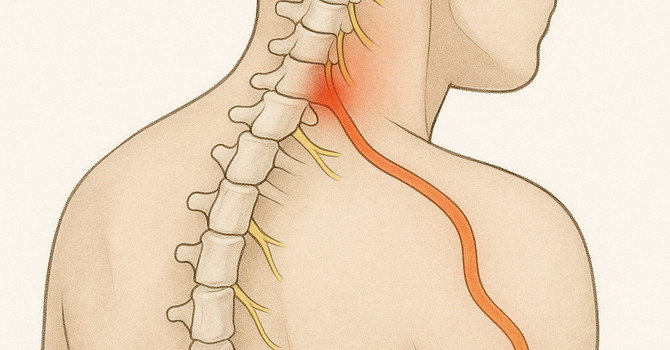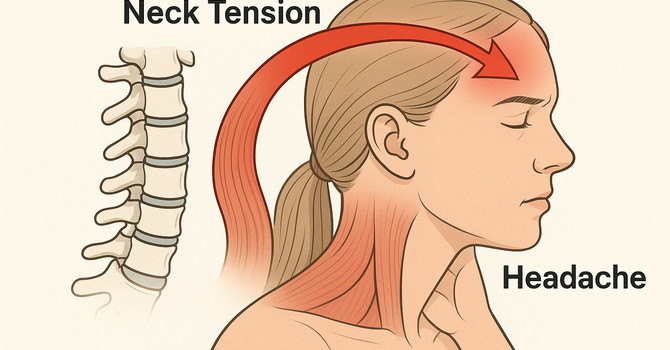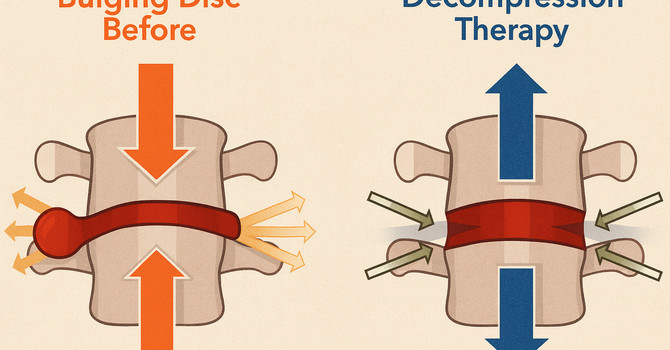Why Long Periods of Sitting at a Desk Causes Your Low Back Pain to Hurt—Especially When You Stand up
Today we are going to answer the question, "why long hours sitting at a desk may cause low back pain, particularly when transitioning from sitting to standing." This is very common, as our increased sedentary lifestyles can wreak havoc on our bodies, especially on the lower back. In this blog, Woodroof Chiropractic & Acpuncture in Olathe explain why sitting for prolonged periods puts your low back at risk, why the transition from sitting to standing can be painful, and what you can do to treat and prevent this discomfort.
The Mechanics of Prolonged Sitting: Lumbar Flexion and Disc Pressure
When you sit, for long periods, your lower back is in a flexed postion. This means the natural curve of your lumbar spine (lower back) flattens or reverses, which will put strain on the spinal discs and vertebrae. In a standing position, the spine has a natural curve that evenly distributes the pressure.
The main issue here is the increased pressure on the intervertebral discs—the spongy cushions between your vertebrae that act as shock absorbers. Studies show that sitting places up to 40% more pressure on the discs compared to standing. This increased pressure is particularly concentrated in the lumbar region, making it susceptible to disc bulging, herniation, or other injuries over time.
Disc Injuries and Low Back Pain
Prolonged lumbar flexion puts your lower back at greater risk for disc injuries. Disc bulges or herniations can occur when the outer layer of a disc weakens, allowing the softer core to push through. This herniation can irritate surrounding nerves, resulting in pain, numbness, or even sciatica (pain radiating down the leg).
The act of sitting for hours on end compresses the discs, reducing their ability to hydrate and maintain their normal function. When discs lose their hydration, they become less resilient and more prone to injury.
Think of it like a water-balloon, if you squeeze (compress) on side the the water balloon, the opposite will "balloon" outward. In this anaology, the disc is the water-balloon, and the squeeze/compression is "sitting."
Why Standing Up Hurts
When you go from a sitting to a standing position, your body undergoes a biomechanical shift. The muscles of your core engage to stabilize your spine, but if your discs or lower back are already inflamed, this core engagement can put additional intra-abdominal pressure on the injured discs, which causese that sharp pain.
This is why transitioning from sitting to standing can often be more painful than remaining in one position.
Treating Low Back Pain: Chiropractic Adjustments and Decompression Therapy
Low back pain from prolonged sitting is treatable, and a combination of adjustments, decompression and proper posture habits can provide relief.
Chiropractic Adjustments
Chiropractic adjustments can help improve the motion of your spine, which will relieve pressure on the discs and nerves. By using gentle manipulations, chiropractors can restore the spine’s natural alignment, improving mobility and reducing pain.
Non-Invasive Spinal Decompression Therapy
Non-invasive spinal decompression therapy is another effective treatment option. This therapy gently stretches the spine, creating negative pressure within the discs. This vacuum effect helps to reposition herniated discs and encourages the reabsorption of disc material, promoting healing and reducing pressure on the nerves. Studies have shown decompression therapy can increase your disc height by 15%.
Decompression therapy is especially beneficial for those suffering from chronic low back pain, herniated discs, or sciatica, as it addresses the root cause of the pain without the need for surgery.
Core Strengthening Exercises
Strengthening your core muscles is important in preventing and managing low back pain. A strong core helps to stabilize the spine, and lumbar discs and reducing the likelihood of injury. Here are three essential exercises to incorporate into your routine:
1. Plank
The plank is one of the best exercises for overall core stability. It strengthens the deep core muscles that support the spine. Hold this position for as long as you can, starting with 20-30 seconds and working your way up to a minute or more.
2. Side Plank
The side plank targets the oblique muscles, which are often neglected but vital for spinal stability. Hold for 20-30 seconds on each side, gradually increasing the time as your strength improves.
3. McGill Crunch Up
The McGill Crunch Up is an alternative to the traditional crunch, designed to avoid placing excess flexion on the lumbar spine. To perform this exercise, lie on your back with one knee bent and the other leg straight. Place your hands under the small of your back to maintain its natural curve. Gently raise your head and shoulders off the floor, focusing on engaging your core muscles without rounding your back. Hold for a few seconds and then lower back down. Repeat 8-10 times.
Conclusion
Long periods of sitting is a common cause of low back pain, especially when the transition from sitting to standing triggers discomfort. This pain often results from lumbar flexion and the increased pressure placed on the discs during seated positions. The key to preventing and treating this type of pain lies in chiropractic adjustments, non-invasive spinal decompression therapy, and core-strengthening exercises.
If you’re suffering from low back pain and are looking for relief, contact us at Woodroof Chiropractic & Acupuncture to learn how chiropractic care and decompression therapy can help you.
Dr. Ike Woodroof
Contact Me


